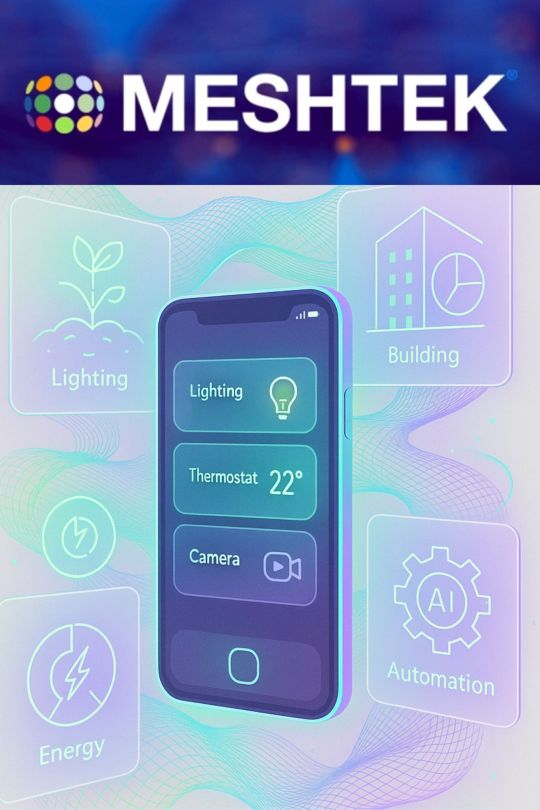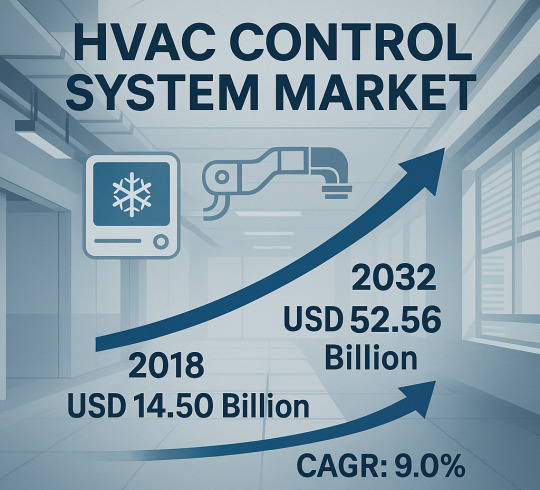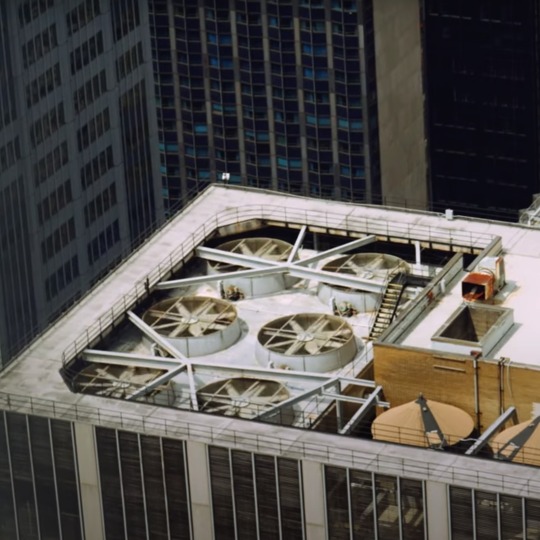#BuildingAutomation
Explore tagged Tumblr posts
Photo

Source: http://wgm-beautiful-world.tumblr.com
2 notes
·
View notes
Text
Empowering Smart Infrastructure with Mobile-Integrated IoT Solutions

Advanced IoT app development enables centralized mobile control across lighting, HVAC, energy, cameras, and AI-based automation systems. Built on Bluetooth mesh networking and edge computing, the system supports long-range connectivity, secure data flow, and seamless device communication. Suitable for industries like smart buildings, agriculture, and smart energy, the platform ensures real-time performance, low power consumption, and simplified user interaction — all through a single, intuitive mobile interface.
#IoTAutomation#SmartInfrastructure#MobileAppDevelopment#BluetoothMesh#EdgeComputing#SmartBuildings#AIInAutomation#EnergyManagement#RealTimePerformance#LowPowerIoT#SeamlessConnectivity#BuildingAutomation#SmartEnergy#AgricultureTech#IntuitiveMobileInterface#SmartLighting#HVACAutomation#SecureDataFlow
1 note
·
View note
Text
Innexia - Smart Home Automation Company In Ahmedabad
No need to wait for warm water. Your few taps away from a cozy home. Smart living starts with a smartphone
When Innexia Is here not to fear..!!

#Innexia#InnexiaStartHere#HomeAutomation#BuildingAutomation#OfficeAutomation#SmartLiving#LuxuryHome#SmartHome#Cozy#SmartPhone#Warmer
2 notes
·
View notes
Text
What Is Smart Building Engineering?

Smart building engineering is the practice of designing and integrating intelligent systems into a building’s infrastructure — so it can automatically adapt, optimise performance, and respond to real-time data.
At its core, it connects the mechanical, electrical, plumbing, fire protection (MEPF) systems with digital technologies like:
Sensors and IoT devices
Building Management Systems (BMS)
Automation controls
Data analytics platforms
Artificial intelligence (AI) and machine learning
Together, these technologies allow buildings to self-regulate, predict failures, reduce energy consumption, and improve occupant comfort and safety.
From Static to Responsive Design
Traditional buildings operate on fixed schedules and manual controls. Smart buildings, however, make dynamic decisions based on:
Who is occupying the space
What time of day it is
Current temperature or air quality
Equipment status or maintenance needs
For example:
Lights dim automatically when natural sunlight is sufficient
Air conditioning adjusts when occupancy levels change
Fire protection systems communicate with security and evacuation alerts in real time
The Role of Engineering in Smart Buildings
Smart functionality doesn’t happen by accident — it requires thoughtful design and expert coordination. That’s where smart building engineering comes in.
It means engineering systems are:
Digitally integrated, not siloed
Designed for automation, not just operation
Built for data collection, monitoring, and optimisation
Compliant with Australian construction standards and sustainability goals
At Decobu, our role is to ensure every service — whether it’s mechanical, electrical, hydraulic, or fire protection engineering — works together as one intelligent, responsive ecosystem.
Why It Matters
Smart building engineering isn’t just about fancy tech — it directly impacts:
Energy efficiency
Predictive maintenance and reduced downtime
Green building compliance (e.g. NABERS, Green Star)
Health, safety, and occupant comfort
Long-term asset value and marketability
As sustainability standards tighten and tenants demand smarter spaces, this approach is becoming a baseline expectation — not an innovation.
Frequently Asked Questions (FAQs)
What exactly does smart building engineering involve?
Smart building engineering involves integrating technologies like IoT sensors, automation systems, and real-time data monitoring into core MEPF (mechanical, electrical, plumbing, and fire protection) systems. This allows buildings to respond automatically to environmental changes, occupancy, and energy demand.
How is smart building engineering different from traditional building design?
Traditional buildings rely on static controls and manual adjustments. Smart buildings, by contrast, use automated systems and data analytics to adapt in real time — improving energy efficiency, comfort, and maintenance responsiveness. It’s a shift from fixed operations to dynamic, intelligent infrastructure.
Can smart technologies be retrofitted into older commercial buildings?
Yes. While smart systems are most efficient when integrated during initial design, engineering consultancy firms in Australia like Decobu can retrofit smart HVAC, lighting, fire protection, and energy monitoring systems into existing buildings to improve performance and compliance.
Does smart building design help with sustainability ratings?
Absolutely. Smart systems directly support green building engineering goals by reducing energy consumption, lowering emissions, and improving operational efficiency. This can boost NABERS and Green Star ratings, which are essential in the Australian commercial property market.
Is smart building engineering only for large-scale developments?
No. While it’s common in commercial towers and campuses, smart building engineering is scalable. Even small offices, retail spaces, or education facilities can benefit from smart HVAC zoning, automated lighting, and intelligent water management — especially when designed with future needs in mind.
0 notes
Text
𝐈𝐨𝐓 𝐢𝐧 𝐄𝐥𝐞𝐯𝐚𝐭𝐨𝐫𝐬 𝐌𝐚𝐫𝐤𝐞𝐭 :- 𝐒𝐦𝐚𝐫𝐭𝐞𝐫 𝐋𝐢𝐟𝐭𝐬, 𝐒𝐦𝐚𝐫𝐭𝐞𝐫 𝐂𝐢𝐭𝐢𝐞𝐬
𝐆𝐞𝐭 𝐒𝐚𝐦𝐩𝐥𝐞 𝐏𝐃𝐅 𝐆𝐮𝐢𝐝𝐞: - https://www.theinsightpartners.com/sample/TIPRE00006251
IoT in Elevators enables real-time data exchange, predictive maintenance, remote monitoring, and enhanced passenger experience.
#IoTInElevators#SmartElevators#ConnectedElevators#ElevatorTechnology#SmartBuildingSolutions#IoTMarket#VerticalMobility#ElevatorInnovation#PredictiveMaintenance#IntelligentTransportatio#BuildingAutomation#UrbanMobility#ElevatorIndustry#FutureOfElevators#SmartInfrastructure#ElevatorSafety#TechInElevators#IoTSolutions#SmartCities#ElevatorMonitoring
0 notes
Text
BMS Facility Management | Nouvel
In the rapidly growing urban hubs of Delhi, Noida, and Haryana, the demand for smart infrastructure is at an all-time high. At the heart of this transformation is BMS facility management—a crucial component of modern-day building operations that ensures safety, energy efficiency, and seamless functionality.

What is BMS Facility Management? BMS, or Building Management System, refers to the intelligent control of a building's mechanical and electrical systems, including HVAC, lighting, power systems, fire systems, and security. When combined with expert facility management, it becomes a comprehensive solution that ensures every element of the building works in harmony—24/7.
Why is BMS Facility Management Crucial for Modern Infrastructure? In metropolitan regions like Delhi-NCR, where residential and commercial buildings are scaling up rapidly, managing large-scale infrastructure can be challenging. BMS facility management solves this with the integration of smart systems that monitor, automate, and optimize building operations. Here’s how it helps:
Energy Efficiency: Automated systems reduce unnecessary power usage and improve cost savings.
Real-Time Monitoring: Facility managers can identify faults instantly and respond proactively.
Safety Compliance: Integrated fire and security systems ensure compliance with local safety regulations.
Operational Transparency: Centralized dashboards offer real-time data, reducing downtime and enhancing decision-making.
Nouvel – Your Trusted Partner in Engineering and Facility Solutions At Nouvel, we specialize in delivering mechanical engineering services integrated with BMS facility management solutions tailored for industrial, commercial, and high-rise residential buildings. With a strong presence in Delhi, Noida, and Haryana, our expert teams bring technical precision and proactive management to every project.
Our BMS-driven facility solutions are aligned with India’s green building standards and are designed to support sustainable development goals. From system integration to post-installation maintenance, Nouvel ensures buildings are not just operational—but optimized for the future.
Serving Industries Across Delhi-NCR Nouvel’s expertise in BMS facility management supports a wide range of industries, including:
IT & Corporate Offices
Manufacturing Plants
Hospitals & Healthcare
Malls & Retail Chains
Educational Institutions
ConclusionAs cities in India continue to grow vertically and digitally, BMS facility management is no longer optional—it's essential. Whether you're managing a multi-floor office in Gurugram or a smart residential complex in Noida, partnering with an experienced provider like Nouvel ensures your building’s infrastructure remains future-ready, energy-efficient, and compliant with evolving standards.
📞 Contact us today! Visit us: 9990034577
#facilitymanagement#facilitymaintenance#housekeepingservices#BMSFacilityManagement#SmartBuildingSolutions#BuildingAutomation#FacilityManagementIndia#EnergyEfficientBuildings#DelhiFacilityServices#NoidaInfrastructure
0 notes
Text

Global HVAC Control System Market Size, Share, Trends & Forecast 2018–2032
🔍 What is the Global HVAC Control System Market Size?
The global HVAC control system market size was valued at USD 14.50 billion in 2018 and is projected to grow to USD 52.56 billion by 2032, exhibiting a robust CAGR of 9.0% during the forecast period.
🌍 Which Region Dominates the HVAC Control System Market?
Asia Pacific dominated the HVAC control system market with a market share of 49.17% in 2018. The HVAC control systems market in the U.S. is also expected to grow significantly, reaching an estimated USD 10.21 billion by 2032, driven by the surge in smart building automation for residential and commercial applications.
🌬️ Why is the HVAC Control System Market Growing?
The increasing adoption of building automation control systems (BACS) is driving demand for advanced HVAC controls. Consumers are seeking low-cost, energy-efficient solutions, while governments worldwide support smart city initiatives to promote sustainable, intelligent buildings. For example, India’s Smart Cities Mission is accelerating the rollout of smart infrastructure across urban spaces.
📌 How is the Market Segmented?
By Product:
Traditional HVAC Control Systems
Smart HVAC Control Systems
By Application:
Residential
Commercial
Industrial
💡 What are the Latest & Future Trends?
Trends like IoT integration, remote monitoring, and AI-driven smart thermostats are transforming HVAC control systems. Expect increased demand for systems that improve comfort, energy efficiency, and sustainability as smart cities expand globally.
👉 Read the full report here: https://www.fortunebusinessinsights.com/hvac-control-system-market-102448
#HVAC#HVACControls#SmartBuilding#BuildingAutomation#SmartHVAC#EnergyEfficiency#SmartCities#MarketTrends#BuildingTechnology#SustainableLiving
0 notes
Text
Smarter Air explores how HVAC automation transforms indoor comfort and energy efficiency. From smart thermostats to AI-driven climate control, automated systems offer convenience, cost savings, and sustainability. Whether at home or in commercial buildings, HVAC automation delivers responsive, data-driven environments tailored to your needs anytime, anywhere.
0 notes
Text
#FireSafety#LiIon#BatterySafety#BuildingAutomation#Honeywell#Innovation#IoT#DataCenters#powerelectronics#powermanagement#powersemiconductor
0 notes
Text

🏢 Smarter Motor Control for Efficient Buildings ⚙️
From cooling towers and chiller pumps to large ventilation fans and booster systems, variable frequency drives (VFDs) deliver precise speed, torque, and power control essential for modern building automation. Designed for both variable and constant torque loads, VFDs dynamically adjust motor operation to match demand in real time, driving significant energy savings and reducing mechanical wear. Built-in features such as fire mode operation, BACnet and Modbus RTU communication, and advanced bypass integration for critical Direct-on-Line (DoL) switchover ensure reliable performance in even the most demanding applications.
With low harmonic design, quiet high-frequency switching, and built-in EMC filters, VFDs simplify installation and improve overall building performance. Whether you operate a residential high-rise, commercial complex, or mission-critical facility, variable frequency drives help achieve energy targets, lower costs, and maintain comfortable environments year-round.
The VFD Exchange
#buildingautomation#hvacefficiency#coolingtowers#vfdtechnology#invertek#drives#torque#speed#electrical#variablefrequencydrives#vfds#motorcontrols#hvac#fans#pumps
0 notes
Text
How Can a Building Energy Management System Save Costs?
Discover how Messung BACD’s Building Energy Management System helps reduce energy consumption, lower operational expenses, and increase efficiency. By offering real-time data, automated controls, and smart insights, our solution identifies energy waste and optimizes usage. Whether it’s for commercial, industrial, or institutional buildings, Messung BACD empowers you to cut costs while promoting sustainability. Start saving with smart building energy solutions today.
0 notes
Photo

Source: http://oldfarmhouse.tumblr.com
#japanesearchitecture#institutionalarchitecture#architecturedocumentary#buildingautomation#landscape
1 note
·
View note
Text

Shaping the Future of Smart Cities with IoT Connectivity- MeshTek
Step into a world where cities are smarter, greener, and more connected than ever. This futuristic cityscape showcases how advanced IoT solutions, powered by Bluetooth Mesh technology, create efficient, self-healing networks that transform urban infrastructure. From smart lighting to intelligent building automation, this innovation paves the way for sustainable growth, energy efficiency, and seamless connectivity. Explore the endless possibilities of a truly interconnected future with MeshTek's visionary platform.
#SmartCities#IoTConnectivity#BluetoothMesh#UrbanInnovation#SustainableLiving#SmartLighting#BuildingAutomation#FutureTechnology#IoTInnovation#MeshNetworking
1 note
·
View note
Text
Building Automation Systems Market Witnessing Transformation Through AI Cloud and Predictive Maintenance Solutions
The Building Automation Systems market is experiencing rapid expansion, driven by the increasing need for energy efficiency, enhanced occupant comfort, and intelligent building management solutions. BAS, which integrates and automates various building systems such as HVAC, lighting, security, and energy management, plays a pivotal role in modern construction, retrofitting, and facility management projects. As cities continue to urbanize and smart infrastructure becomes more prevalent, the demand for advanced automation systems is projected to rise significantly over the next decade.

Market Drivers
One of the most significant drivers of the BAS market is the growing emphasis on energy efficiency and sustainability. Governments worldwide are implementing strict energy conservation regulations and green building standards. Building automation systems enable real-time monitoring and control of energy usage, helping reduce operational costs and meet environmental compliance.
The rising adoption of smart building technologies is another key factor. With advancements in IoT (Internet of Things), artificial intelligence (AI), and cloud computing, BAS has evolved from simple centralized control systems to intelligent, data-driven platforms. These systems enhance decision-making, automate tasks based on predictive analytics, and ensure proactive maintenance, reducing downtime and improving building performance.
Market Segmentation
The BAS market is segmented based on offering, system type, application, and region. By offering, it includes hardware, software, and services. The hardware segment, including sensors, controllers, actuators, and input/output devices, continues to dominate due to rising installations. However, the software and services segments are witnessing faster growth owing to the demand for advanced analytics and ongoing system maintenance.
System-wise, the market covers HVAC control, lighting control, security and access control, and others. Among these, HVAC systems account for the largest share, driven by the critical need for climate control in commercial and industrial facilities. Lighting and security automation are also gaining traction due to increasing awareness about energy savings and safety.
Applications of BAS span across commercial buildings, residential buildings, industrial facilities, and government infrastructures. The commercial sector leads due to widespread adoption in offices, malls, hospitals, and airports. However, the residential sector is rapidly catching up as smart home technologies become more affordable and accessible.
Regional Insights
North America holds a major share in the BAS market, led by the United States and Canada, where high investments in smart infrastructure and energy efficiency programs are prevalent. Europe follows closely, driven by EU directives on energy performance in buildings and growing green building certifications.
The Asia-Pacific region is expected to witness the fastest growth, fueled by rapid urbanization, expanding construction sectors in countries like China and India, and increasing smart city initiatives. Governments across the region are prioritizing energy management, public safety, and automation in public infrastructure, further boosting the market.
Competitive Landscape
The BAS market is moderately fragmented with several global and regional players. Key companies include Honeywell International Inc., Johnson Controls, Siemens AG, Schneider Electric, and ABB, all of which focus on innovation, strategic partnerships, and acquisitions to expand their market footprint.
Newer entrants and startups are contributing significantly through niche innovations, particularly in cloud-based BAS platforms, AI-powered analytics, and integrated IoT frameworks. Competition is intensifying as firms race to offer customizable, scalable, and interoperable solutions that align with evolving building standards.
Future Outlook
The future of the building automation systems market is highly promising, with continuous technological advancements expected to redefine the sector. Integration with AI, machine learning, and digital twins will allow buildings to become more adaptive and autonomous. Enhanced cybersecurity measures will also become vital as BAS becomes more connected and data-reliant.
Furthermore, the shift toward zero-energy buildings, increasing retrofitting projects, and evolving workplace needs post-pandemic are likely to sustain long-term market growth. As buildings become smarter, safer, and more sustainable, BAS will play a central role in shaping the future of urban living and working environments.
In conclusion, the Building Automation Systems market is poised for robust growth, fueled by technology, regulations, and rising expectations for smart, efficient, and sustainable buildings. Businesses that can innovate and adapt to these changing dynamics will be well-positioned to lead in the global BAS landscape.
0 notes
Text
#RECOM Power#PowerElectronics#ACDCConverter#IndustrialAutomation#BuildingAutomation#EngineeringSolutions#PowerModules#Innovation#electronicsnews#technologynews
0 notes
Text
Blue star vrf air conditioning
It’s time to upgrade to a Variable Refrigerant Flow (VRF) AC system – the smart choice for modern cooling at Concept Engineers ! With exceptional energy efficiency and flexible installation options, VRF systems are redefining comfort for homes, offices, and commercial spaces.
Call us: +91-9871130164 Visit our website: https://conceptengineers.co.in/vrf-system.php

#BlueStarVRF#VRFAirConditioning#ConceptEngineers#HVACSolutions#EfficientCoolin#SmartAirConditioning#CommercialCooling#HVACTechnology#EnergyEfficientAC#CoolingSolutions#BuildingAutomation#GreenBuildingSolutions#SmartHVAC#IndustrialCooling#ClimateControl#HVACIndia#CoolingSolutionsDelhi#AirConditioningServicesDelhi
0 notes